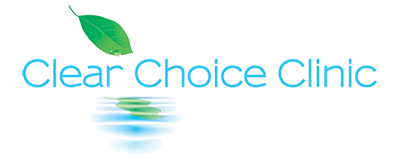COVID 19
What You Need to Know About COVID 19
In December 2019, the Chinese government announced an outbreak of a novel coronavirus.[i] Since then, the virus has spread to over 100 countries and infected thousands of people. As everyone is well aware, this situation is changing on an hourly basis, by region. Use this article as a guide, but check the CDC website, or other reliable outlet for the latest information. In addition, contact your local or state health department to obtain region-specific information.
Background
Coronaviruses are common and cause garden variety colds and flus. This virus is termed “novel” because it is a type of coronavirus that has never been seen in humans. A novel virus is one that typically starts out in animals (camels, cattle, cats, and bats) —but it evolves and “jumps” into humans (this rarely occurs).[ii] Other such viruses include the beta coronavirus that caused Middle East Respiratory Syndrome (MERS) and the beta coronavirus that causes severe acute respiratory syndrome, or SARS. SARS-CoV-2 is the virus that is now causing Coronavirus Disease, or COVID-19.
SARS-CoV-2 Basics
Spread: Investigators are still learning how it is spread. It appears the most common way is through close contact with an infected individual, through airborne droplets, but this is not the only way it is spread.[iii]
- Primary method: airborne droplets—direct contact with an infected person from coughs, sneezes.
- Secondary: inanimate objects (doorknobs, etc.) to face, eyes, nose
- Community: Per the CDC, this means people have been infected with the virus in an area, including some who are not sure how or where they became infected. This makes it more difficult to identify at risk individuals.
Symptoms of COVID-19:
- Fever (over 100.4 degrees Fahrenheit)
- Cough
- Shortness of breath
Incubation Period (based on MERS data)
- From 2 days to 14 days after an exposure
How the Disease Manifests
As with any viral infection, how it affects individuals varies widely. Some people will have the virus in their system without obvious symptoms. For others, it causes severe illness including respiratory failure, septic shock and death.[iv] The majority of people contract symptoms similar to the seasonal flu and recovery fully.
Who is at Greatest Risk?
The elderly and individuals with severe chronic underlying medical conditions such as heart disease, diabetes, and lung disease appear to contract the most severe cases.[v]
How does COVID-19 Affect Pregnant Women?[vi]
Currently, there is no data on how this virus affects pregnant women. Pregnancy is a state of relative immunocompromise compared to the non-pregnant state. This may make pregnant women more susceptible to some infections, including flu viruses. Based on experience with MERS and SARS, pregnant women may be at risk for more severe cases. Adverse pregnancy outcomes (such as miscarriage and stillbirth) were more prevalent in women infected with MERS and SARS outbreaks in the past).
It is unknown if vertical transmission occurs in an infected pregnant (in utero, during delivery). Limited reports of infected pregnant woman did not detect the virus in amniotic fluid or breast milk.
Take steps to protect yourself
- Clean your hands often
- Wash your hands often with soap and water for at least 20 seconds especially after you have been in a public place, or after blowing your nose, coughing, or sneezing.
- If soap and water are not readily available, use a hand sanitizer that contains at least 60% alcohol. Cover all surfaces of your hands and rub them together until they feel dry.
- Avoid touching your eyes, nose, and mouth with unwashed hands.
- Avoid close contact
- Avoid close contact with people who are sick
- Put distance between yourself and other people if COVID-19 is spreading in your community. This is especially important for people who are at higher risk of getting very sick. (vii)
Take steps to protect others
- Stay home if you’re sick
- Stay home if you are sick, except to get medical care. Learn what to do if you are sick. (viii)
- Cover coughs and sneezes
- Cover your mouth and nose with a tissue when you cough or sneeze or use the inside of your elbow.
- Throw used tissues in the trash.
- Immediately wash your hands with soap and water for at least 20 seconds. If soap and water are not readily available, clean your hands with a hand sanitizer that contains at least 60% alcohol.
- Wear a facemask if you are sick
- If you are sick: You should wear a facemask when you are around other people (e.g., sharing a room or vehicle) and before you enter a healthcare provider’s office. If you are not able to wear a facemask (for example, because it causes trouble breathing), then you should do your best to cover your coughs and sneezes, and people who are caring for you should wear a facemask if they enter your room. Learn what to do if you are sick. (viii)
- If you are NOT sick: You do not need to wear a facemask unless you are caring for someone who is sick (and they are not able to wear a facemask). Facemasks may be in short supply and they should be saved for caregivers.
- Clean and disinfect
-
- Clean AND disinfect frequently touched surfaces daily. This includes tables, doorknobs, light switches, countertops, handles, desks, phones, keyboards, toilets, faucets, and sinks.
- If surfaces are dirty, clean them: Use detergent or soap and water prior to disinfection.
- Most common EPA-registered household disinfectants will work. Use disinfectants appropriate for the surface.
[i] https://onlinelibrary.wiley.com/doi/10.1002/emp2.12040
[ii] https://www.cdc.gov/coronavirus/2019-ncov/summary.html
[iii] https://www.cdc.gov/coronavirus/2019-ncov/about/transmission.html
[iv] https://www.cdc.gov/coronavirus/2019-ncov/hcp/faq.html
[v] https://www.cdc.gov/coronavirus/2019-ncov/specific-groups/high-risk-complications.html
[vi] https://www.cdc.gov/coronavirus/2019-ncov/specific-groups/pregnancy-faq.html
(vii) https://www.cdc.gov/coronavirus/2019-ncov/specific-groups/high-risk-complications.html
(viii) https://www.cdc.gov/coronavirus/2019-ncov/downloads/sick-with-2019-nCoV-fact-sheet.pdf

